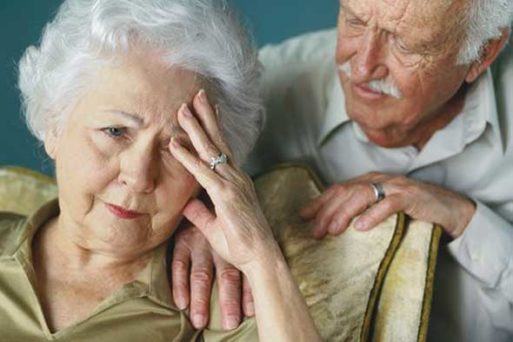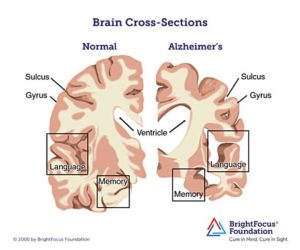Historically, medical professionals thought that people with Alzheimer’s disease and related conditions did not feel pain as acutely as other aging adults. According to a WebMD article published in 2006, this was based on the observation that Alzheimer’s patients complained less about pain and took fewer painkillers than those who did not have the disease. This led doctors to assume that patients with dementia felt less pain.

Credit: immunophen.org
This thinking started to change in 2006, when researchers at the University of Melbourne and the National Ageing Research Institute in Victoria, Australia, reported the results of a small study comparing brain scans performed on Alzheimer’s patients and similar adults who did not have the disease. The study showed that activity in the parts of the brain that process pain was identical in people who had Alzheimer’s and those who did not. In fact, the people with Alzheimer’s seemed to feel more pain, not less, than other adults.
More recently, researchers at Vanderbilt University in Nashville, Tennessee, conducted a three-year study of pain perception in patients with Alzheimer’s disease. They found that people with Alzheimer’s felt pain just as intensely as similar adults, but were less able to communicate their pain.
Based on this research, doctors and caregivers are now advised to observe dementia sufferers carefully for nonverbal signs of discomfort. According to Alzheimer’s Australia, these may include: moaning or grimacing when initiating movement; limping or guarding a body part; or restlessness, crying and irritability. Doctors and other healthcare professionals are also encouraged to use standardized pain-assessment tools, such as the Abbey Pain Scale, to assess pain in patients who have difficulty with verbal communication.

Credit: medicalook.com
If you think your loved one with dementia may be in pain, tell a healthcare professional what you have been noticing. Your observations can help the doctor determine the cause of the pain and how serious the underlying condition is. Common sources of pain in older adults include arthritis, diabetic neuropathy, headaches, dental problems and infections. However, other more serious issues must also be ruled out.
Once the doctors have made a diagnosis, they will make recommendations for a treatment plan. This may include nonprescription medications such as acetaminophen and ibuprofen, or prescription drugs such as codeine or morphine. Caregivers should be aware that extra care must be taken when using any medicines in the elderly because they may be very sensitive to their effects or require a smaller dose.
Nonpharamceutical measures may also be very helpful. For example, neck and shoulder massage may help a person with a stress headache, and ice alternating with heat may soothe minor injuries. Even gentle exercises like stretching or water aerobics can make the body more limber and minimize injuries that may cause pain.

 How People with Alzheimer’s Disease Experience Pain
How People with Alzheimer’s Disease Experience Pain


 How Dare You Die Now!
How Dare You Die Now!

 “Help Me, Helen”
“Help Me, Helen”














